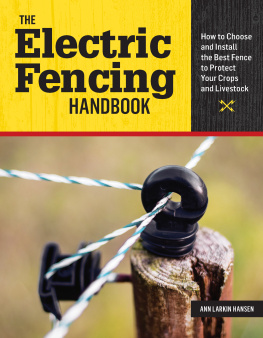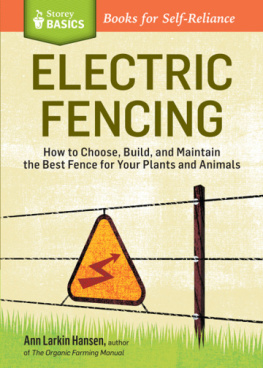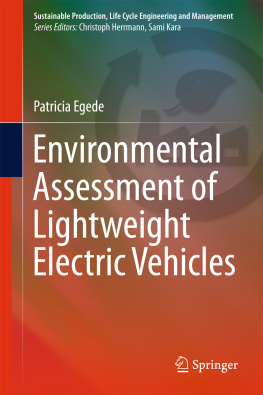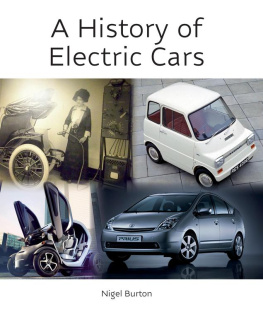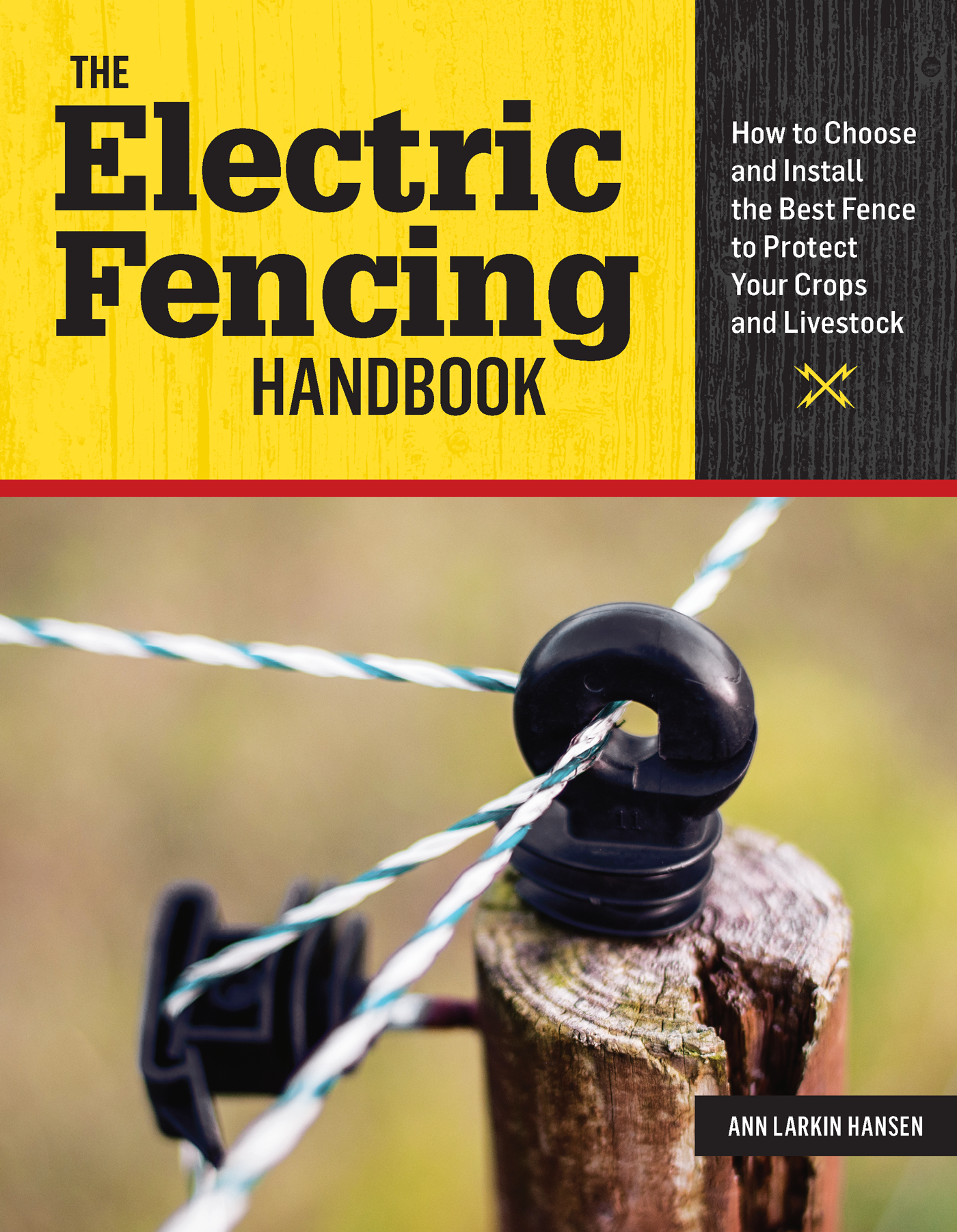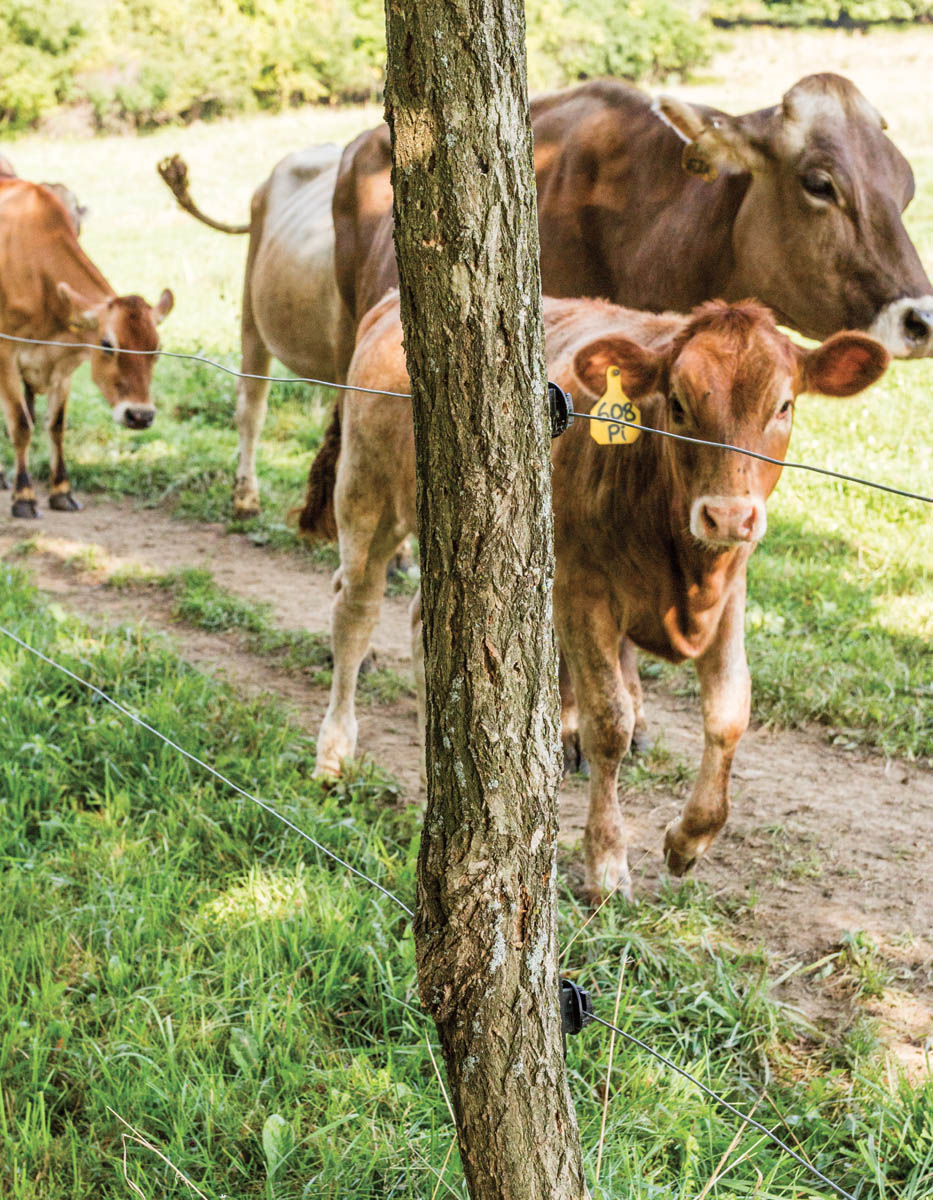The need to protect crops from hungry wildlife is as old as farming. The knowledge that moving livestock to new pastures improves their diet is as old as ranching. Whats less than a century old is getting these jobs done by putting electricity on fence wires. Around 75 years ago, the tools and techniques for portable electric fencing were developed, and agriculture hasnt been the same since.
Modern electric fencing is one of the most versatile and cost-effective tools available to the sustainable farmer who needs to contain domestic animals or protect plantings, poultry, and livestock from wild animals. For a fairly small investment (as farm equipment and supplies go) you can build and use electric fence for many different purposes, such as separating deer from seedling trees, rabbits from garden lettuce, weaned calves from cows, bears from beehives, or foxes from chickens.
Where electric fence has really revolutionized sustainable agriculture is in making rotational grazing (a.k.a. management intensive grazing, or MIG) easy as well as flexible enough to adjust quickly to changing weather and seasons. Portable electric fencing used for rotational grazing will increase the carrying capacity of your pastures, improve the quality of your soils, enhance the overall ecological health of your land, and improve your farms bottom line.
Which components to buy and the type of electric fence to build are determined by:
Electric net fencing is the portable fence of choice for sheep, goats, and poultry on smaller acreages.
Why Electric?
Whether permanent or temporary, electric fencing has advantages and disadvantages compared to nonelectric, traditional fencing (see below). The most obvious difference between the two is that traditional nonelectric fencing whether made of wood or wire provides a physical barrier, while electric fencing presents a psychological one. Electric fences are physically weak; the fear of electric shock is all that stops the animals.
For most farmers the advantages of an electric fence far outweigh the disadvantages. This book will cover the basics of planning, installing, and maintaining an electric fence system appropriate to what you are containing or protecting.
Pros and Cons of Electric Fences
+ Positives
Practicality. Electric fencing is cheaper than nonelectric and is more versatile and more effective in many situations.
Portability. Lightweight posts and plasticized wires make it quick and simple to put up and take down a temporary fence almost anywhere.
Negatives
Need for frequent inspection. When not if it gets shorted out by lightning, a broken wire, or some other mishap, the electric fences effectiveness is gone and you may have animals where you dont want them.
Invisibility. You cant tell just by looking whether your fence is connected correctly to the energizer or if there is enough voltage on the wires. You can overcome this drawback by the regular use of a fence tester.
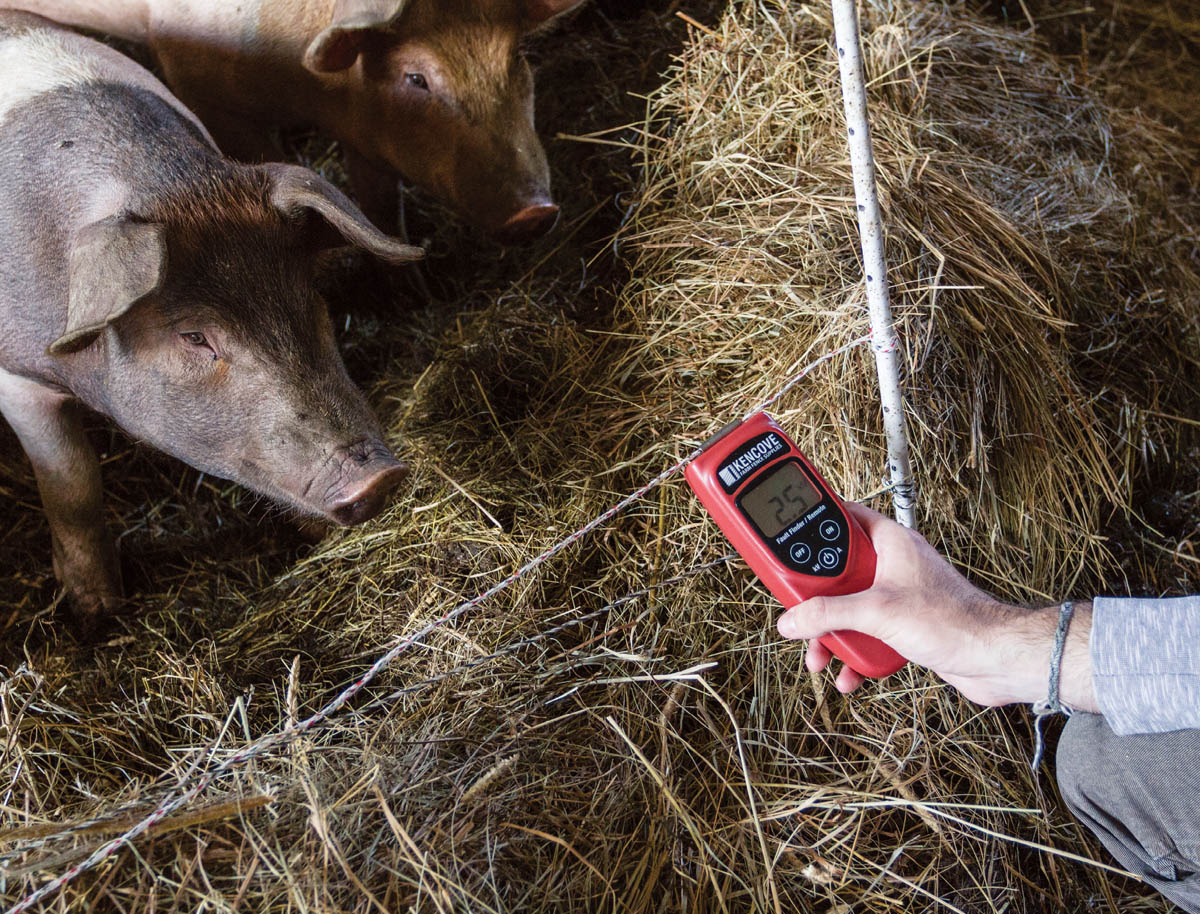
Use a fence tester to measure the voltage and amperage in your fence.
Chapter One
How an Electric Fence Works
When an animal touches a charged fence, the electricity passes through its body to the ground and back to the energizers grounding system. This completes the electrical circuit and gives the animal a memorable shock. The shock is what makes the fence work: animals conclude that the pain isnt worth the reward of pushing through the fence. This is how they are trained.
The intermittent static electrical charges on an electric fence are generated by a fence energizer (also called a fencer, power unit, controller, or charger), a box of electronic components that convert standard low-voltage current from an electrical outlet or storage battery to the high-voltage pulses along the fence wire.
Elements of Electric Fencing
The most important principle of electric fencing is that electricity doesnt shock unless it is moving. For electricity to move there must be a complete circuit; that is, the charge generated by the energizer must be able to find its way back to the energizer.
Clearly, then, the energizer is only part of the circuit; contrary to popular belief, it alone does not control the effectiveness of an electric fence. The type and condition of the wires and whether there is enough moisture in the ground to conduct electricity both play critical roles in how effective a fence will be.
The animal is the switch that completes the current in an electric fence system.
Two additional factors help to make a fence effective:
- Properly insulating the charged wires from the ground so the current flows only through the animal
- Having a good ground system, so that when the current is flowing it doesnt get diluted on its way back to the energizer

Electric-tionary
To understand any discussion of electric fencing, its helpful to know some basic electrical concepts. The simplest way to grasp these is to compare the current along a wire to water in a hose.
Volts are the equivalent of water pressure. The more pressure (volts), the farther the charge can jump. Voltage must be higher if the charge has to jump farther to penetrate thick fur or hair.
Amps are the equivalent of water volume. The longer your fence or the more faults present, the more amps youll need to fill the line.
Watts are volts x amps, and are used to describe how much electricity is being drawn from the power source. Watts also underlie the next, very important concept.
Joules are watts multiplied by time. One watt for one second = one joule. The size of a fence energizer is commonly ranked by the number of joules it generates. Joules are related to the amount of fence the energizer is capable of charging effectively, but the relationship is not straightforward, as we will discuss in .

